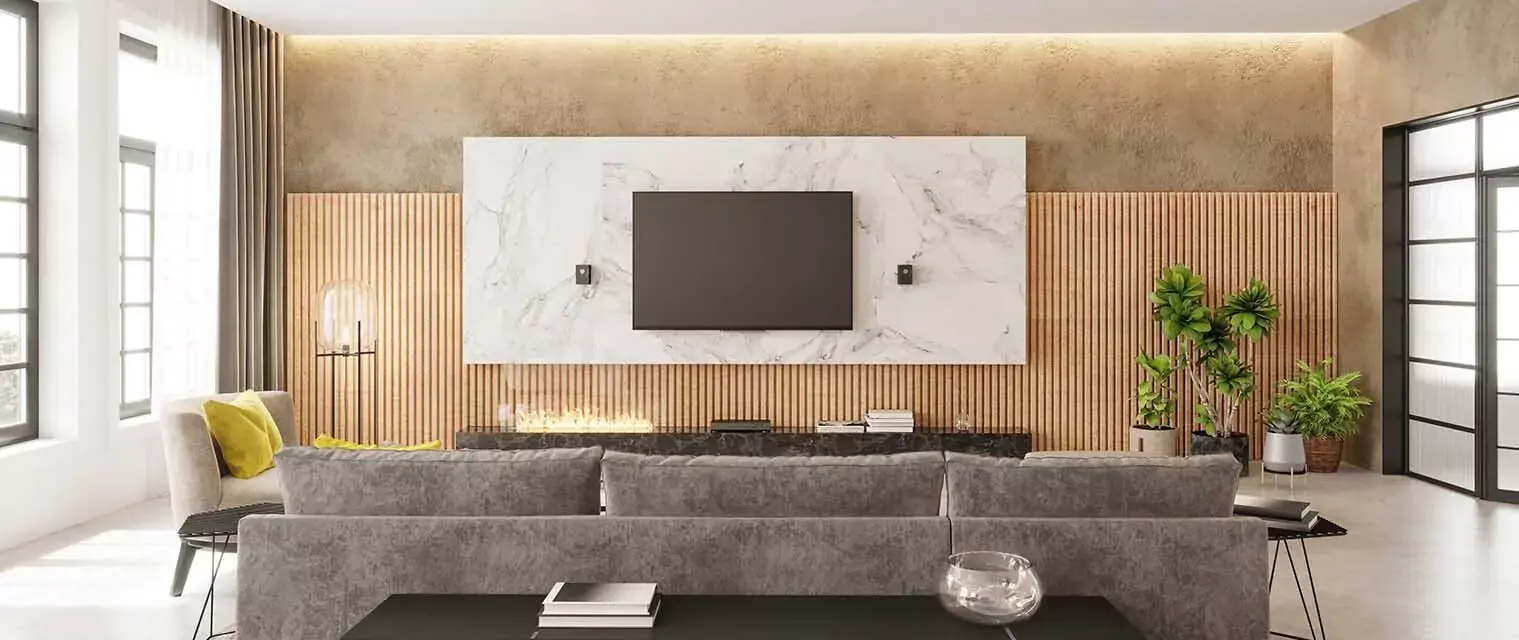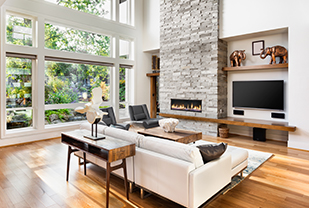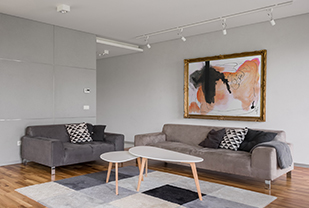An Overview of Geometric Interior Design
There has been an ongoing debate among interior designers regarding the merger of geometric shapes in interior design within the dimensional world. Geometric Interior Design is a décor trend that designers have developed from simple minimalistic houses to ultra-modern office spaces.
Geometric Shapes in Interior Design
Shapes like squares, triangles, circles and polygons are widely used in interior design to achieve order, symmetry and structure in a space. These shapes can be included through building design elements, furniture, ornamentations and organization of the space.
Get Free Estimate - Price Calculator
Advantages of Using Geometric Interior Design
- Visual Appeal: Geometric interior design are commonly used because they give the impression of being astonishing in most cases.
- Spatial Illusion: Certain spatial patterns may make a room appear bigger or smaller than it is.
- Balance and Harmony: Geometric design of geometric shapes promotes unity within the whole house thus brings about balance and harmony.
Disadvantages of Using Geometry in Interior Design
- Overwhelming Design: According to our interior designers in Thane, an overwhelming geometric interior design is too dependent on patterns making a room look crowded. This results in it seeming too full due to having too many things within it.
- Rigidity: On the other hand, geometrical designs create order but at times make things feel constricted especially where they lack certain elements.
Examples of Geometric Design in Interior Design
Let's explore eight inspiring examples where geometry takes center stage in interior design:
Hexagonal Tiles

Hexagonal tiles can be transformative in bathrooms and kitchens by forming a fascinating geometric interior design which gives a sense of volume and gives a rough feel. They provide a new feel in traditional ground and wall coverings since they can be applied in many settings. When organized in different ways, they create different designs while still allowing room for expansion, for example from hexagonal shapes to honeycomb configurations making the interior more captivating.
Chevron Patterns

The geometric shapes in interior design, the V-shaped illustration that Chevron has been employed in flooring architecture is meant to bring about speed and purpose. Beside the normal wood style, chevron models are also found in tiles, rugs as well as wallpapers introducing vibrant fervor in the rooms. Dazzling lines that mimic a zigzag direct attention towards these floors hence rooms appear either longer or bigger depending on how this pattern has been positioned.
Geometric Wallpaper

According to interior decorators in Hyderabad, geometric shapes in interior design, wallpapers that have bold patterns can completely alter a room, introducing suspense and a center of attraction in every space. Geometric wallpapers with either large-scale geometrical forms or detailed, can create various feelings and most importantly - fits various styles. Thus, such wallpapers work great on accent walls as well as small rooms enhancing their spatial feel.
Furniture Design

Furniture, which often contains geometric interior design for decoration and usage, is normally made in geometric patterns from geometrically shaped tables to chairs with drawings resembling screaming kittens. Geometrically designed furniture serves not only as a functional artwork in a home setting but as part of the room’s overall appearance.
Architectural Elements

The design of ceiling beams, wall paneling, and window frames use geometric shapes to make clear and highlight the architectural features. Coffered ceilings with geometric patterns provides a feeling of depth and complexity within a room. Geometrically paneled walls can also provide the texture cues needed to add life and interest on them when required.
Light Fixtures

Angular geometric interior design drop lights which have geometric shapes in interior design, do not only lighten but also beautify. They are in different geometric shapes such as cubes, spheres and pyramids usually made of materials like metal, glass or acrylic too. The way arranged, produces attractive light patterns and shadows hence advancing the ambience of any given surrounding.
Artwork and Decor

Many individuals like to use artifacts that are created through geometrical designs to enhance how things look. Abstract geometric images on walls are however, much cooler than using sculptures because they offer advanced beauty. By incorporating them into environment settings, dimensions are done through shapes whereas fabrics such as carpets cover dynamic global patterns under minimal force which work more strongly.
Modular Shelving Units

According to our interior designers in Coimbatore, geometric shapes in interior design modular storage systems provide storage flexibility and aesthetic enhancement. These systems can be configured into various geometric patterns like grids, cubes, or asymmetrical arrangements to suit different spatial dimensions and style inclinations. It is worth noting that this shelving helps utilize the room economically in addition to giving an artistic touch to indoor areas.
Where, How and Why Geometry is Used in Interior Design
Where Geometry Comes into Play
There are various interior spaces where geometry finds its place:
- Residential Homes: Residential properties are often characterized by their sleek, streamlined interiors. Houses that are modern and have contemporary styles frequently come with geometry in interior design.
- Commercial Spaces: Offices, hotels and stores use geometry in interior design for this purpose as it makes them stand out among their competitors because they help in the establishment of a unique brand image that stays longer in the minds of customers than any other aspect including pricing or customer service provision.
- Public Spaces: Museums, galleries and other public buildings use geometrical shapes and architectural expressions of sophistication and grandeur more often than not.
Visit - Interior Design Portfolio
Why Geometry Matters in Interior Design
- Structural Integrity: The concept of organization space for utilization and viability is given by geometry.
- Visual Interest: Geometry also creates a way of adding depth, texture as well as visual interest on surfaces otherwise appearing plain or inside rooms.
- Design Cohesion: Harris (1994) showed that through shaping processes that conform to geometrical rules, it is possible to have an integer design that is perfect aesthetically both inside and out.
How Do Interior Designers Use Geometry?
To answer the very FAQ “how is geometry used in interior design”, geometry in interior design is quite important since it plays a certain role in the design of either a house or workplace. Various shapes serve a designer's expanding rooms and creating certain emotions that are facilitated by some of the geometric shapes used.
Conclusion
In conclusion, geometric interior decoration is a style that will remain relevant for long. It helps in enhancing the visual appeal and functionality of various indoor structures by application of this ancient pattern either in a discreet manner or dramatically articulated things like doors and windows which we use every day etc.
We at Decorpot know the best about geometry used in interior design. Need help? We are always here to help with end to end solutions. Get in touch now.




.png)

.png)



 2026 | All Rights Reserved
2026 | All Rights Reserved